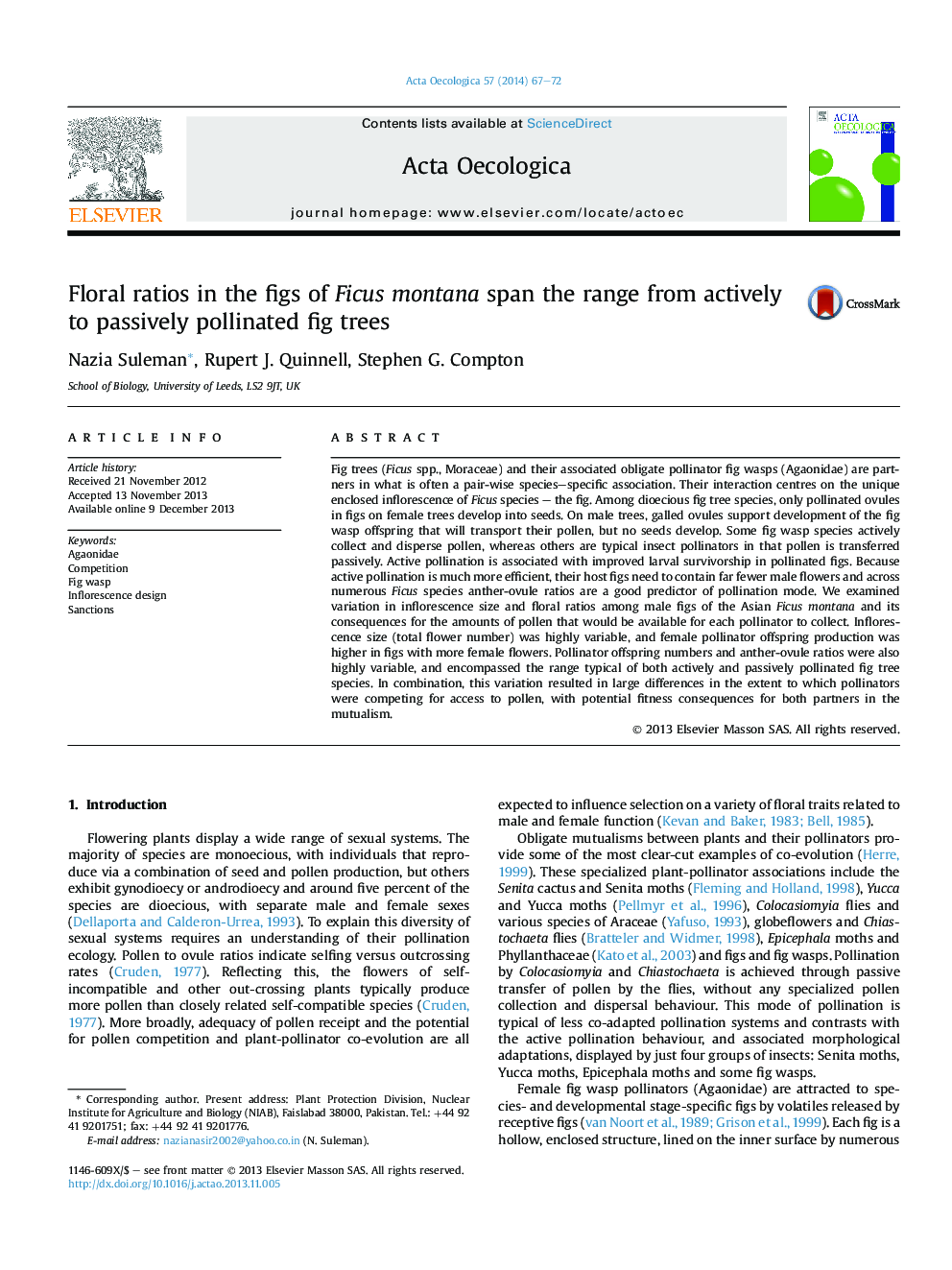| کد مقاله | کد نشریه | سال انتشار | مقاله انگلیسی | نسخه تمام متن |
|---|---|---|---|---|
| 4381040 | 1617714 | 2014 | 6 صفحه PDF | دانلود رایگان |

• Inflorescence size in dioecious fig tree Ficus montana, is highly variable.
• Female pollinator offspring production is higher in figs with more female flowers.
• Pollinator offspring numbers and anther-ovule ratios are also highly variable.
• Anther-ovule ratio encompasses the range of both actively and passively pollinated fig tree species.
Fig trees (Ficus spp., Moraceae) and their associated obligate pollinator fig wasps (Agaonidae) are partners in what is often a pair-wise species–specific association. Their interaction centres on the unique enclosed inflorescence of Ficus species – the fig. Among dioecious fig tree species, only pollinated ovules in figs on female trees develop into seeds. On male trees, galled ovules support development of the fig wasp offspring that will transport their pollen, but no seeds develop. Some fig wasp species actively collect and disperse pollen, whereas others are typical insect pollinators in that pollen is transferred passively. Active pollination is associated with improved larval survivorship in pollinated figs. Because active pollination is much more efficient, their host figs need to contain far fewer male flowers and across numerous Ficus species anther-ovule ratios are a good predictor of pollination mode. We examined variation in inflorescence size and floral ratios among male figs of the Asian Ficus montana and its consequences for the amounts of pollen that would be available for each pollinator to collect. Inflorescence size (total flower number) was highly variable, and female pollinator offspring production was higher in figs with more female flowers. Pollinator offspring numbers and anther-ovule ratios were also highly variable, and encompassed the range typical of both actively and passively pollinated fig tree species. In combination, this variation resulted in large differences in the extent to which pollinators were competing for access to pollen, with potential fitness consequences for both partners in the mutualism.
Journal: Acta Oecologica - Volume 57, May 2014, Pages 67–72